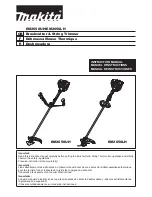
66
6.
Select Start and Stop Latch
ON
. Press
PREV SCREEN
.
7. Press
the
TIMER RESET
Button. Press the
INIT
Button. The
AC MAIN
turns ON.
When the High Voltage contacts close,
AC MAIN
output turns OFF, and the timer
starts. When the Low Voltage contacts close the Timer Stops. Record the Low
Voltage Closing Time. To repeat the test, press the
TIMER RESET
Button, and
press the
INIT
Button. When the test is completed, turn the
AC AUX
Off.
MOLDED CASE CIRCUIT BREAKERS
Always refer to the manufacturer's literature applicable to the particular circuit breaker
before testing. The test operator should be familiar with the operating characteristics of
the circuit breaker, the tolerances applicable to the operating characteristics and the
means for adjusting the circuit breaker, if any.
The test usually performed on these devices is to verify the time delay characteristics of
the circuit breaker when subjected to an overload. Each pole of the circuit breaker
should be tested independently. One test point is usually suggested to establish
whether the circuit breaker is operating correctly and within the band of the time-current
curve for the circuit breaker. The suggested test current is three times (3X) the normal
current rating of the circuit breaker.
It is, of course, easiest to make connections and perform the test on circuit breakers if
they are removed from the circuit. However, it is not necessary to remove the circuit
breaker, as long as the test leads can be connected and the line side of the breaker
de-
energized
. It should be further noted that any leads already connected to the circuit
breaker need not be removed when conducting the test. The high-current leads from
the test set to the circuit breaker under test should be kept as short as possible and
should be twisted to minimize the losses caused by inductive reactance.
Run the test and note the time required for the circuit breaker to trip. If the tripping time
exceeds the desired value or if the circuit breaker does not trip at all, the circuit breaker
may not be protecting the circuit properly. If the circuit breaker operates too quickly, it
may result in unnecessary nuisance trips. It should be remembered that molded case
circuit breakers operate within a wide time band. Therefore, precise results should not
be sought and, if the circuit breaker trips within the time band, it is considered
satisfactory. A tolerance of ±15% is usually acceptable. Look for the circuit breaker
that has unusually short time delay or takes an abnormally long time to trip or does not
trip at all. In the latter case, electrically operating, and thereby exercising the breaker,
may correct the condition.
Summary of Contents for SR-98
Page 93: ...87...
















































